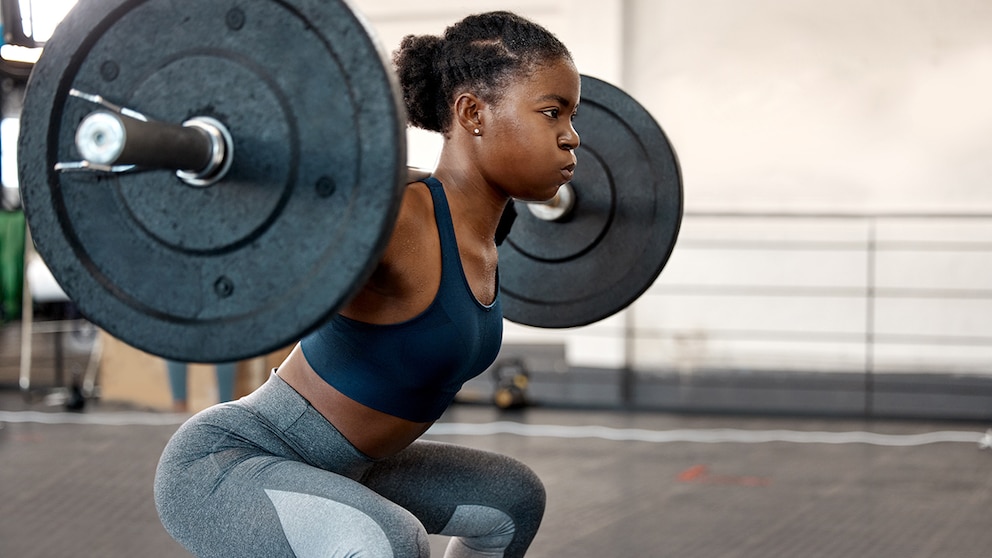April 18, 2025, 12:28 pm | Read time: 3 minutes
Squats are the ultimate exercise for training glute and leg muscles. However, only those who consistently increase their training weight can expect growth in their lower body muscles. With tips from trainer and FITBOOK expert Alina Bock, you can safely lift significantly more weight in your squats within a month—potentially even twice as much!
You’ve been doing squats for a short time but are eager for a new challenge in your strength workout? Then join the goal of doubling the training weight used in squats within a month. This is especially achievable for beginners. To succeed in this short time, you should pay attention to a few things and design your training smartly. Here’s what doubling your squat training weight can look like. Let’s get started!
Overview
Beginners Have the Best Prerequisites
The squat is one of the most complex exercises in strength training. For those who have already learned good technique and are working with a certain weight, doubling their record within a month can be difficult. Doubling a starting weight of over 50 kilograms, as advanced lifters do, within a month is not possible. Of course, well-trained individuals can still increase their weight, but much more slowly. Beginners, especially those who have already learned the correct technique, have the best prerequisites to double their squat record within a month.
The Right Squat Training Plan
Only those who follow a well-thought-out training plan have the chance to double their squat training weight within a month. In this challenge, you should continuously adjust the number of repetitions and the weight to progressively increase the weight. Here’s an example of how it might look:
- Week 1: 3 sets of 12 to 15 repetitions
- Week 2: 3 sets of 8 to 12 repetitions
- Week 3: 4 sets of 6 to 8 repetitions
- Week 4: 4 sets of 4 to 6 repetitions
It’s important to increase the weight from week to week, or even from session to session, if possible.
Consistency with Consideration for Recovery
Consistency is, alongside recovery, one of the most important components. To progressively increase your training weight, you should plan at least two training sessions per week. The only exception: muscle soreness. It should subside before the next training session.
To promote recovery, you should also adjust your diet. Caloric intake should be higher than caloric expenditure. Additionally, protein intake should be increased to at least two grams per kilogram of body weight. Carbohydrates should be consumed especially after training. Carbohydrate sources that are quickly processed by the body and converted into energy are particularly suitable. After training, carbohydrates quickly replenish energy stores and thus drive recovery forward.

Squat Challenge! Double Your Training Weight in One Month

How Deadly Diabetes Can Be

How to Train Strength and Endurance with Mountain Climbers
Exercises That Support the Squat Training
In addition to squats, supplementary exercises can support the process of increasing strength. Supplementary exercises can include:
- Hip thrusts
- Romanian deadlifts
- Lunges
- Leg extensions
- Leg curls
Make sure that squats remain the focus. The other exercises are really just supplements. Always start your training with squats after the warm-up and mobility section to avoid depleting your energy reserves beforehand. Two to three supplementary exercises with two to three sets each are sufficient.
Additionally recommended: Core exercises. A strong core supports stability during squats. Exercises that train the core include:
- Plank
- V-Sit
- Russian Twist
- Knee-Lift

